 Having recently examined the more interesting soloistic and orchestral new releases, it’s time to give an overview of the best of the rest, music that doesn’t fit quite so easily into nice categories. First, released today on the Innova label, is Sunken Cathedral, the new album from Korean-American composer and singer Bora Yoon. Described as “a sonic journey through the chambers of subconscious”, the collection of songs that comprise Sunken Cathedral are a testament to Yoon’s fascination with sound design, married to a vocal approach that evokes a kind of ecstatic mysticism (or should that be mystical ecstasy?). It’s a quality writ large at the outset, refitting Hildegard of Bingen into a soft ambient driftscape, but throughout the album it reveals itself in increasingly subtle and unexpected ways. Yoon’s ear is clearly very fine-tuned; a dreamy setting of the Latin In Paradisum text is encased in the sounds of a scrawling pen, dogs barking, gentle bow tappings on a viola, jangling chimes, the rustling of Bible pages, a pair of Buddha machines and — my favourite — “subwoofing spoons”. It’s heady, even intoxicating stuff, with absolutely no sense of novelty to any of it; each sound, literally, rings true.
Having recently examined the more interesting soloistic and orchestral new releases, it’s time to give an overview of the best of the rest, music that doesn’t fit quite so easily into nice categories. First, released today on the Innova label, is Sunken Cathedral, the new album from Korean-American composer and singer Bora Yoon. Described as “a sonic journey through the chambers of subconscious”, the collection of songs that comprise Sunken Cathedral are a testament to Yoon’s fascination with sound design, married to a vocal approach that evokes a kind of ecstatic mysticism (or should that be mystical ecstasy?). It’s a quality writ large at the outset, refitting Hildegard of Bingen into a soft ambient driftscape, but throughout the album it reveals itself in increasingly subtle and unexpected ways. Yoon’s ear is clearly very fine-tuned; a dreamy setting of the Latin In Paradisum text is encased in the sounds of a scrawling pen, dogs barking, gentle bow tappings on a viola, jangling chimes, the rustling of Bible pages, a pair of Buddha machines and — my favourite — “subwoofing spoons”. It’s heady, even intoxicating stuff, with absolutely no sense of novelty to any of it; each sound, literally, rings true.
Words often recede behind a textural emphasis; ‘잔소리 판소리 (Jansori Pansori)’, subtitled ‘A play on words and love’, brings together (among other things) voicemail messages, snares on tibetan singing bowls, clapping hands, tossed coins and aluminium cans; the rhythmic impetus and sonic exotica combine to create an atmosphere of prayer-imbued ritual. Here, again, the apparent incongruities of Yoon’s sound sources somehow coalesce into something very much more than the sum of their parts. Each song is a high point, but the highest is the album’s epicentre, ‘Little Box of Horrors’, a black, viscous, industrial-strength work that moves from contemplation to confrontation, where Yoon considers how “the things that cut/are also the very things that illuminate—/and what you don’t deal with…/deals with you”. Kitted out with the noise of heartbeats, sand debris, water, prepared piano, heavy breathing, 10-gallon jugs, feedback, a box, a bowed Tibetan bowl and even a swimming pool, it shows Bora Yoon at her bewildering, genre-defying best. It certainly epitomises Sunken Cathedral, which is a tour de force of the most imaginative kind of avant-garde lyricism.
 Staying in America, John Cage‘s music for two keyboards is being explored in a new series of discs on Naxos by Xenia Pestova and Pascal Meyer. Volume 1, released last October, presents A Book of Music for two prepared pianos alongside Cage’s only two works for toy piano, the miniature Suite and more substantial Music for Amplified Toy Pianos. The duo’s performance of the latter work is as fascinating as it is laugh-out-loud hilarious, their navigation through Cage’s indeterminate score resulting in a mercurial kind of halting hocket between the toy pianos and an array of bizarre sounds. By contrast, A Book of Music is very much more intensely focused, and this interesting division between austerity and mischief is also a feature of Volume 2, released this month. It opens with a realisation of Music for, performable in a variety of instrumental combinations; here rendered as Music for Two it reveals Cage’s indeterminacy to be as challenging as ever, forever stopping and starting, the duo switching between regular playing and using ebows on the strings. The effect is often unsettling, especially when the bowed notes occur in the lower registers, becoming a threatening metallic growl. The Three Dances for prepared pianos, composed as far back as 1945, could hardly be more different: rapid, rhythmic and playful, utilising consistent metres and endless streams of notes. The first settles periodically into repeating patterns, the combination of prepared piano timbres and overt dance-like qualities suggesting it emanates from a far-away land. The last is even more rapid, aggressively so, its rhythms markedly syncopated and as such sounding more directly pianistic than either of the other dances. The duo’s playing through this extremely virtuosic material is simply outstanding, particularly so as it becomes both tribalistic and covered in embellishments at the end. For me, though, the middle dance makes the deepest impression; Cage has never sounded more gamelan-like than here, the halting performance similar to its theatrical ebb and flow (and the timbres are for the most part almost identical); this more than anything else demonstrates how marvellously transparent is Pestova and Meyer’s performance, enabling one to enter the strange theatre of Cage’s imagining and form our own convoluted narrative. A fantastic disc, revealing anew the timeless kind of modernity that’s so unique to Cage.
Staying in America, John Cage‘s music for two keyboards is being explored in a new series of discs on Naxos by Xenia Pestova and Pascal Meyer. Volume 1, released last October, presents A Book of Music for two prepared pianos alongside Cage’s only two works for toy piano, the miniature Suite and more substantial Music for Amplified Toy Pianos. The duo’s performance of the latter work is as fascinating as it is laugh-out-loud hilarious, their navigation through Cage’s indeterminate score resulting in a mercurial kind of halting hocket between the toy pianos and an array of bizarre sounds. By contrast, A Book of Music is very much more intensely focused, and this interesting division between austerity and mischief is also a feature of Volume 2, released this month. It opens with a realisation of Music for, performable in a variety of instrumental combinations; here rendered as Music for Two it reveals Cage’s indeterminacy to be as challenging as ever, forever stopping and starting, the duo switching between regular playing and using ebows on the strings. The effect is often unsettling, especially when the bowed notes occur in the lower registers, becoming a threatening metallic growl. The Three Dances for prepared pianos, composed as far back as 1945, could hardly be more different: rapid, rhythmic and playful, utilising consistent metres and endless streams of notes. The first settles periodically into repeating patterns, the combination of prepared piano timbres and overt dance-like qualities suggesting it emanates from a far-away land. The last is even more rapid, aggressively so, its rhythms markedly syncopated and as such sounding more directly pianistic than either of the other dances. The duo’s playing through this extremely virtuosic material is simply outstanding, particularly so as it becomes both tribalistic and covered in embellishments at the end. For me, though, the middle dance makes the deepest impression; Cage has never sounded more gamelan-like than here, the halting performance similar to its theatrical ebb and flow (and the timbres are for the most part almost identical); this more than anything else demonstrates how marvellously transparent is Pestova and Meyer’s performance, enabling one to enter the strange theatre of Cage’s imagining and form our own convoluted narrative. A fantastic disc, revealing anew the timeless kind of modernity that’s so unique to Cage.
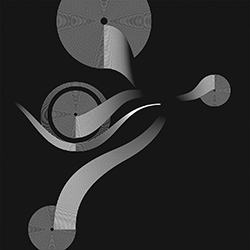 Cage’s inclusion of natural sounds as musical entities finds a resonance in Script Geometry, the striking new double album from French sound artist Thomas Tilly, out now on the Aposiopèse label. Tilly’s starting point is a collection of field recordings made over the course of a month spent in the tropical rainforest of French Guiana. He describes how he “listened to and captured the sound environment with an emphasis on animal communications, those which are perceptible to the human ear, but also the inaudible that exist in the ultrasonic spectrum”. These recordings are presented in two ways, the first of which is overtly hands-off, Tilly allowing them to speak for themselves in a raw state, without editing or mixing. But far more impressive are the several pieces Tilly composes using these recordings, mixing and layering them into awesome vistas of sound. Sometimes (as in the opening track, ‘At night, mass’) this appears at first hearing to result in cacophony, but gradually one realises there’s a huge sense of perspective, enabling listening at different ‘depths’, so to speak. Another composition, ‘Crossroads, phasing’, challenges the instinct (for both recordist and listener) to move on from a seemingly unchanging sound, but persistence is rewarded, as the soundworld is constantly in flux; furthermore, this track powerfully conveys the heat of Tilly’s environment, practically conjuring up humidity. An engrossing album, it’s crowned with a one-hour untouched ‘reference recording’ that opens a large-scale window on the epic panorama of the rainforest. Aposiopèse have spared nothing in presentation: Script Geometry is available as a sumptuous double-vinyl set (cut by none other than Rashad Becker) with the reference recording on an accompanying CD; for the turntabley-challenged, there’s a lossless digital edition also available.
Cage’s inclusion of natural sounds as musical entities finds a resonance in Script Geometry, the striking new double album from French sound artist Thomas Tilly, out now on the Aposiopèse label. Tilly’s starting point is a collection of field recordings made over the course of a month spent in the tropical rainforest of French Guiana. He describes how he “listened to and captured the sound environment with an emphasis on animal communications, those which are perceptible to the human ear, but also the inaudible that exist in the ultrasonic spectrum”. These recordings are presented in two ways, the first of which is overtly hands-off, Tilly allowing them to speak for themselves in a raw state, without editing or mixing. But far more impressive are the several pieces Tilly composes using these recordings, mixing and layering them into awesome vistas of sound. Sometimes (as in the opening track, ‘At night, mass’) this appears at first hearing to result in cacophony, but gradually one realises there’s a huge sense of perspective, enabling listening at different ‘depths’, so to speak. Another composition, ‘Crossroads, phasing’, challenges the instinct (for both recordist and listener) to move on from a seemingly unchanging sound, but persistence is rewarded, as the soundworld is constantly in flux; furthermore, this track powerfully conveys the heat of Tilly’s environment, practically conjuring up humidity. An engrossing album, it’s crowned with a one-hour untouched ‘reference recording’ that opens a large-scale window on the epic panorama of the rainforest. Aposiopèse have spared nothing in presentation: Script Geometry is available as a sumptuous double-vinyl set (cut by none other than Rashad Becker) with the reference recording on an accompanying CD; for the turntabley-challenged, there’s a lossless digital edition also available.
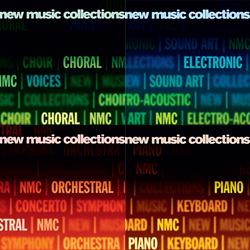 Back in Britain, NMC recordings have recently issued four compilations (in both physical and digital formats) featuring selections from throughout their catalogue, grouped under the headings Choral, Electronic, Orchestral and Piano. i approached them with no little trepidation; compilations have a tendency to do their contents nothing but a disservice, offering little more than a chop-&-change farrago operating at the most superficial level. However—and i use this word carefully—there was something revelatory about the experience of listening to the 270+ minutes of music contained in these albums. Taken as a whole, they testify to the remarkable breadth of NMC’s output in its 25-year existence, and individually, they illustrate something of the impressive variety to be found in music by British composers. To be strictly fair (and accurate), they also bear witness to NMC’s limits—they’ve never been a Wergo or a NEOS; the truly avant garde has always tended to be beyond their outlook—yet any label whose catalogue includes such diverse figures as Giles Swayne, Michael Finnissy, Christopher Fox, Harrison Birtwistle, Donnacha Dennehy, Roger Smalley, Claudia Molitor, Richard Causton, Hugh Wood, Richard Rodney Bennett, Simon Holt, Tansy Davies and James Dillon surely has a great deal to boast about. There are works included that can be enjoyed on their own terms, such as Howard Skempton‘s beautifully soaring, searing anthem The Bridge of Fire, Sarah Collins‘ exquisite, field recording-based Forest Piece, and any number of the piano works (Michael Zev Gordon‘s On Memory: a tango there was is a real treat). But what these four albums do best is act as portals, points of departure from which one can take a huge number of entirely different trajectories. Listening to portions of larger works like Giles Swayne‘s Cry, Birtwistle‘s Meridian, Roger Smalley‘s Pulses, Hugh Wood‘s Symphony and James Dillon‘s The Book of Elements is to be given a tantalising glimpse into something irresistible, a glimpse that’s also an invitation, one that should swiftly and wholeheartedly be accepted.
Back in Britain, NMC recordings have recently issued four compilations (in both physical and digital formats) featuring selections from throughout their catalogue, grouped under the headings Choral, Electronic, Orchestral and Piano. i approached them with no little trepidation; compilations have a tendency to do their contents nothing but a disservice, offering little more than a chop-&-change farrago operating at the most superficial level. However—and i use this word carefully—there was something revelatory about the experience of listening to the 270+ minutes of music contained in these albums. Taken as a whole, they testify to the remarkable breadth of NMC’s output in its 25-year existence, and individually, they illustrate something of the impressive variety to be found in music by British composers. To be strictly fair (and accurate), they also bear witness to NMC’s limits—they’ve never been a Wergo or a NEOS; the truly avant garde has always tended to be beyond their outlook—yet any label whose catalogue includes such diverse figures as Giles Swayne, Michael Finnissy, Christopher Fox, Harrison Birtwistle, Donnacha Dennehy, Roger Smalley, Claudia Molitor, Richard Causton, Hugh Wood, Richard Rodney Bennett, Simon Holt, Tansy Davies and James Dillon surely has a great deal to boast about. There are works included that can be enjoyed on their own terms, such as Howard Skempton‘s beautifully soaring, searing anthem The Bridge of Fire, Sarah Collins‘ exquisite, field recording-based Forest Piece, and any number of the piano works (Michael Zev Gordon‘s On Memory: a tango there was is a real treat). But what these four albums do best is act as portals, points of departure from which one can take a huge number of entirely different trajectories. Listening to portions of larger works like Giles Swayne‘s Cry, Birtwistle‘s Meridian, Roger Smalley‘s Pulses, Hugh Wood‘s Symphony and James Dillon‘s The Book of Elements is to be given a tantalising glimpse into something irresistible, a glimpse that’s also an invitation, one that should swiftly and wholeheartedly be accepted.
Before turning to the last album, i want to mention a couple of smaller things. Swedish Jonna Lee’s iamamiwhoami alter-ego has been releasing new songs in the last couple of months that will presumably eventually form her third album. The first two, ‘Fountain’ and ‘Hunting For Pearls’, are among the best vocal electronica i’ve heard in a while, complemented in the last day or two with an impressive third song, ‘Vista’; all available direct from the artist or via iTunes—videos for each song (which, in keeping with all iamamiwhoami’s output, are works of art in themselves), can be viewed on YouTube. Music of a not dissimilar vein comes from LA band Dwntwn, whose new self-titled EP is released today; it’s less dance-oriented than their previous two EPs, showing a more mature, considered side to their music, of which opening track ‘Til Tomorrow’ is really outstanding. Most definitely a group to keep an active eye on.
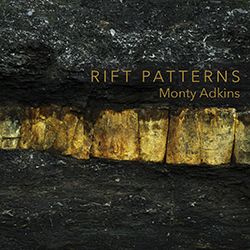 Finally, then, Huddersfield-based composer Monty Adkins is having a good year. In addition to a very interesting recent EP Residual Forms (available free from Crónica), the last couple of weeks have seen the release of Adkins’ latest album, a substantial work titled Rift Patterns, out on the splendid Audiobulb label. Concerned with (in the composer’s words) “the psychogeographical exploration of places and how they impact on our identity and feelings”, Rift Patterns can be approached from a variety of angles, existing as it does in the form of an iBook, which incorporates extensive text (by writer Deborah Templeton), images (by all-round creative Stephen Harvey) and video (by artist Jason Payne). The iBook—available only with the lossless 16- and 24-bit editions direct from the label—is an undeniable thing of beauty (see screenshots below), Templeton’s narrative encompassing both tension and quietude, reinforced by Harvey’s images reflecting both the pastoral and the industrial. The iBook certainly deepens the experience considerably, but Adkins’ music communicates just as well—perhaps best—on its own terms. The eight tracks that comprise Rift Patterns are, as one would expect, a masterclass in electronic elegance. There is, as always, a huge amount going on in the music, emanating from a host of impulses and inspirations, but surely what defines Adkins’ music above all else is its peerless beauty. i used to think of it as the great hope for the stultifying world of ambient music, but listening to Rift Patterns makes me realise that this is post-ambient, music that captures everything that once made ambient music wonderful, but fills it with much, much more, and takes it somewhere utterly beyond. On the one hand, Adkins’ palette is relatively small, his harmonic language simple, but they’re used to superb effect, hitting home at an emotional level directly and immediately. There tends to be more than a whiff of melancholy (or, at the very least, wistfulness) pervading Adkins’ music, and that’s here, lending the deep pedal notes a gravitas that makes one’s chest ache, and filling the honky-tonk piano notes with a poignancy that’s extremely moving. Gorgeous and thought-provoking in equal measure, it’s a very fine work indeed, essential listening for those drawn to the most meditative forms of contemporary electronic music.
Finally, then, Huddersfield-based composer Monty Adkins is having a good year. In addition to a very interesting recent EP Residual Forms (available free from Crónica), the last couple of weeks have seen the release of Adkins’ latest album, a substantial work titled Rift Patterns, out on the splendid Audiobulb label. Concerned with (in the composer’s words) “the psychogeographical exploration of places and how they impact on our identity and feelings”, Rift Patterns can be approached from a variety of angles, existing as it does in the form of an iBook, which incorporates extensive text (by writer Deborah Templeton), images (by all-round creative Stephen Harvey) and video (by artist Jason Payne). The iBook—available only with the lossless 16- and 24-bit editions direct from the label—is an undeniable thing of beauty (see screenshots below), Templeton’s narrative encompassing both tension and quietude, reinforced by Harvey’s images reflecting both the pastoral and the industrial. The iBook certainly deepens the experience considerably, but Adkins’ music communicates just as well—perhaps best—on its own terms. The eight tracks that comprise Rift Patterns are, as one would expect, a masterclass in electronic elegance. There is, as always, a huge amount going on in the music, emanating from a host of impulses and inspirations, but surely what defines Adkins’ music above all else is its peerless beauty. i used to think of it as the great hope for the stultifying world of ambient music, but listening to Rift Patterns makes me realise that this is post-ambient, music that captures everything that once made ambient music wonderful, but fills it with much, much more, and takes it somewhere utterly beyond. On the one hand, Adkins’ palette is relatively small, his harmonic language simple, but they’re used to superb effect, hitting home at an emotional level directly and immediately. There tends to be more than a whiff of melancholy (or, at the very least, wistfulness) pervading Adkins’ music, and that’s here, lending the deep pedal notes a gravitas that makes one’s chest ache, and filling the honky-tonk piano notes with a poignancy that’s extremely moving. Gorgeous and thought-provoking in equal measure, it’s a very fine work indeed, essential listening for those drawn to the most meditative forms of contemporary electronic music.


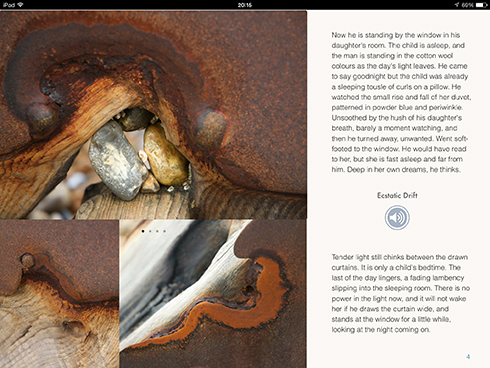

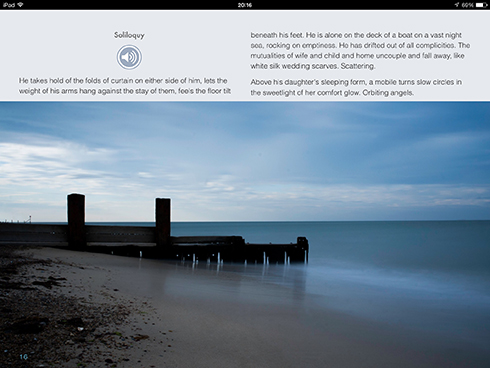
[…] Wonderful review of Rift Patterns on the 5:4 blog for new music. Read it here: http://5against4.com/2014/04/29/cd-roundup-gli-altri/ […]
Super excited by the new iamamiwhoami tracks. I was a tiny bit disappointed by “Bounty”, but hell, those new tracks are just awesome, especially combined with those new videos. I mean, just look at “Fountain”, where in the end they casually drop nature shots like straight from a Terence Malick movie, helicopter shots and all. Simply stunning (and also a financial mystery, by the way).
I wonder if you have listened to the new “I break horses” album “Chiaroscuro”; it’s been my favourite vocal electronica album so far this year.
[…] Adkins will also be presenting his beautiful electronic work Rift Patterns (my review of which is here). One of contemporary music’s most alluringly dark clarinettists, Gareth Davis, will be […]
[…] mentioned the various singles being drip-fed into the world earlier this year, iamamiwhoami‘s latest album Blue has finally been released in all its glory in the last few […]
[…] in its video trilogy version, with three tracks from the larger cycle (my review of which is here) and accompanying visuals by Jason Payne. The connections between sound and sight were telling, […]
[…] subconscious”. Her songs are personal yet aspire to and evoke heights of mystical ecstasy; my review summed up Sunken Cathedral as “heady, even intoxicating stuff, with absolutely no sense of […]
[…] iBook, with accompanying texts and video. i can’t really put it better than i did in my original review: “listening to Rift Patterns makes me realise that this is post-ambient, music that captures […]
[…] of ‘Script geometry’ / (Album. 2Lp+Cd) 2014 – By 5 against 4 : Cage’s inclusion of natural sounds as musical entities finds a resonance in Script Geometry, […]
[…] work created by Monty Adkins and Stephen Harvey. The two collaborated on last year’s Rift Patterns, and this new work displays the same close attention to the intricate, intimate marriage of sight […]